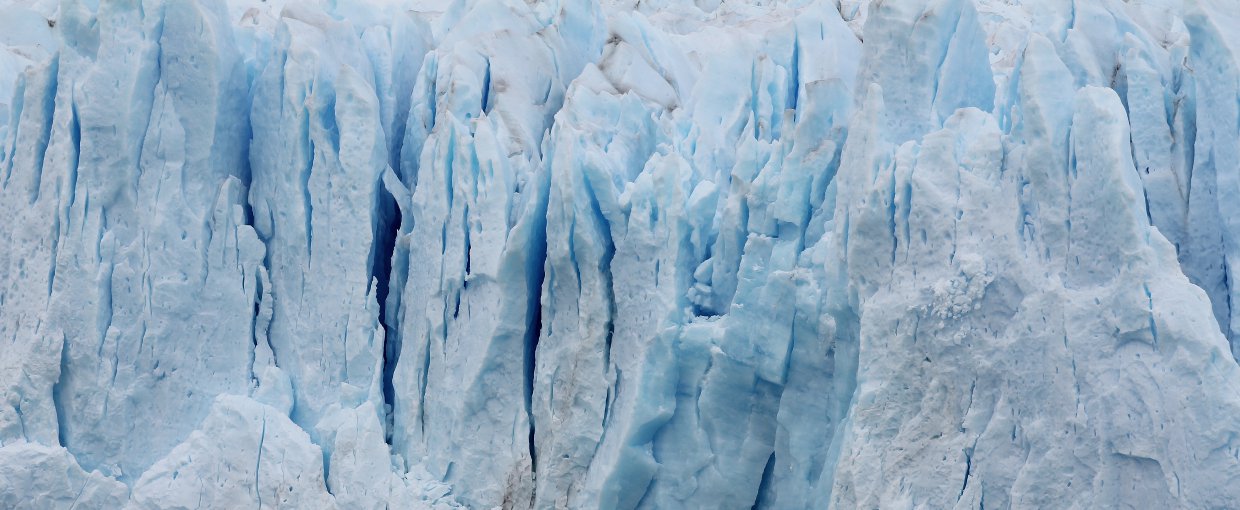
Nov. 6, 2018
Research Highlight
Clues to Ocean Chemistry in the Cryogenian

The face of Perito Moreno Glacier in Argentina.Image credit: A. Gronstal.
Researchers have provided new details concerning the Cryogenian Kingston Peak iron formation and glacial deposits found in Death Valley, California. The Kingston Peak Formation contains a record of glacial sediments that include iron formation horizons. The origin of these iron formations have disputed, with theories ranging from volcanism to hyrothermalism. The detailed case study provides textural evidence that these formations are synsedimentary, meaning that they were formed within the surrounding sediment as the sediment was being laid down. The researchers propose that the formations resulted from the mixing of oxygenated glacial fluids with ferruginous seawater. The sedimentology suggests that this process occurred in a range of glaciomarine environments. The study indicates that glacial fluids may have supplied oxygen to the oceans during the Cryogenian period (720 to 635 million years ago).

Graded conglomerate / breccia facies of the upper Kingston Peak Formation, Kingston Range.Image credit: Lechte et al. (2018).
The study, “Cryogenian iron formations in the glaciogenic Kingston Peak Formation, California,” was published in the journal Precambrian Research. Co-author Ashleigh Hood was supported through a NASA Astrobiology Postdoctoral fellowship.